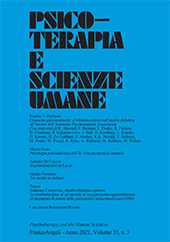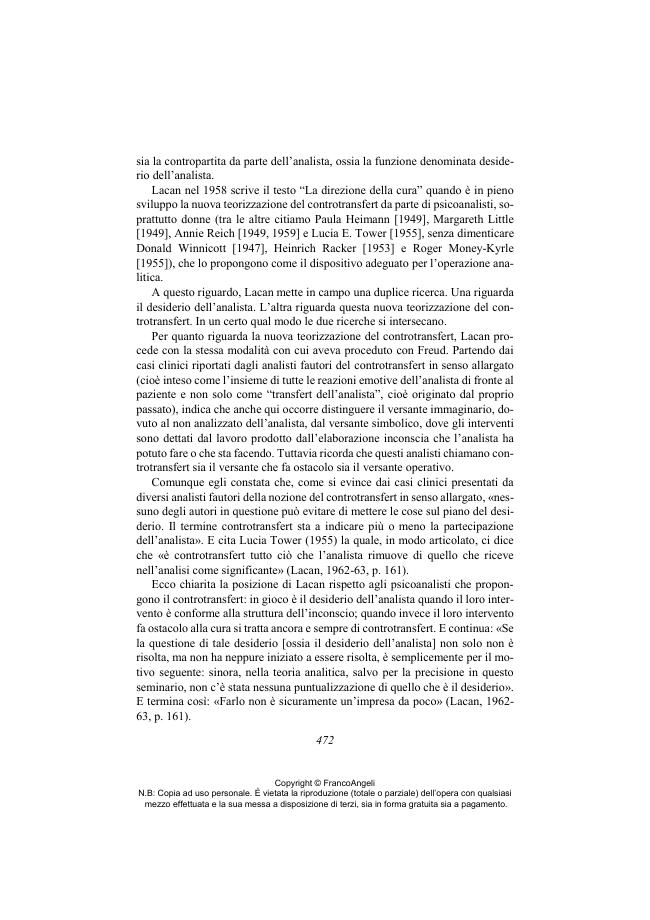Il controtransfert in Lacan
467-476 p.
Lacan al controtransfert oppone, per operare nella cura, la funzione "il desiderio dell'analista". Dopo aver affrontato la questione in Freud, Lacan si volge verso i fautori della concezione allargata del controtransfert (inteso cioè non come "transfert dell'analista" ma come l'insieme di tutte le sue reazioni al paziente) e dimostra che il controtransfert funziona mettendo in gioco il desiderio dell'analista. Non si tratta del desiderio della persona dell'analista ma di una funzione: quella che permette l'elaborazione simbolica per cogliere, al di là del rapporto duale, e quindi immaginario, il reale in gioco nel vissuto del proprio paziente.
L'intento di Lacan sarà allora quello di puntualizzare quali sono gli aspetti nodali per l'emergenza di questa funzione in un analizzante affinché si tramuti in uno psicoanalista. Questa trasformazione avviene su due assi, ambedue prodotti dall'elaborazione in analisi del futuro analista e che saranno la base per operare in quanto tale. Si tratta dell'asse del sapere inconscio e dell'asse di ciò che egli è e deve essere nella cura con i suoi pazienti. [Testo dell'editore].
Lacan in the psychoanalytic treatment contrasts countertransference to the function of "the analyst's desire". After addressing this issue in Freud, Lacan turns to the advocates of the "totalistic" conception of countertransference (i.e., understood as the full range of the emotional states of the analyst in front of the patient, and not only as "the analyst's transference") and shows that countertransference works by putting the analyst's desire into play. It is not a question of the analyst's desire but of a function: the function that allows for the symbolic elaboration in order to grasp, beyond the dyadic and therefore imaginary relationship, the real at stake in the patient's experience. Lacan's intention will then be to point out which are the key aspects for the emergence of this function in an analysand so that he can become a psychoanalyst.
This transformation takes place on two axes, both produced by the working through in analysis of the future analyst and that will be the basis for working as such. They are the axis of unconscious knowledge and the axis of what the analysand is and must be in the treatment with his patients. [Publisher's text].
Forma parte de
Psicoterapia e scienze umane : LV, 3, 2021-
Artículos del mismo número (disponibles individualmente)
-
Información
Código DOI: 10.3280/PU2021-003003
ISSN: 1972-5043
MATERIAS
KEYWORDS
- Controtransfert, Immaginario, simbolico e reale, Lacan, Desiderio dell'analista, Discorso dell'analista
- Countertransference, Imaginary, symbolic, and real, Lacan, The psychoanalyst' desire, The psychoanalyst' discourse



